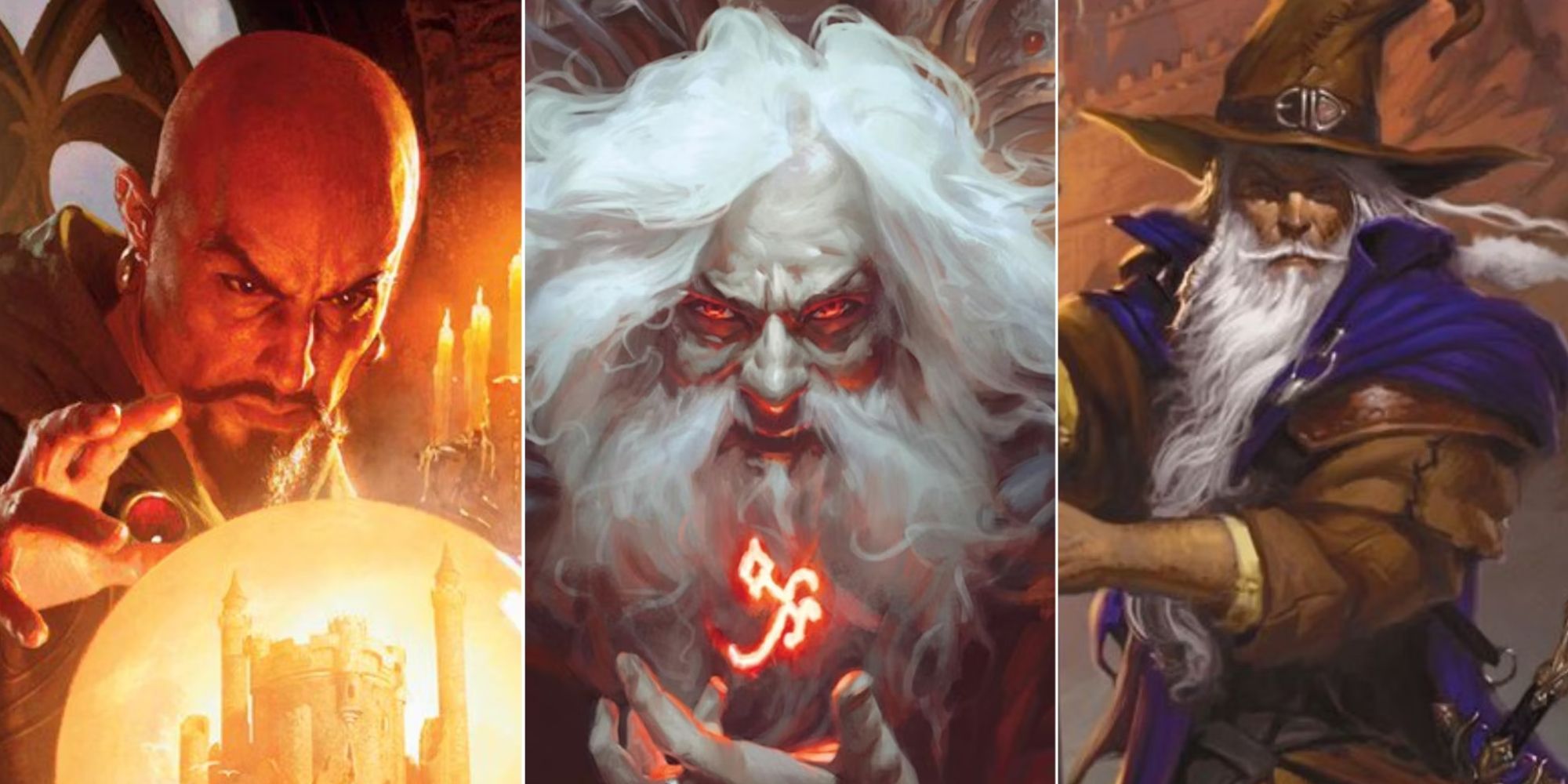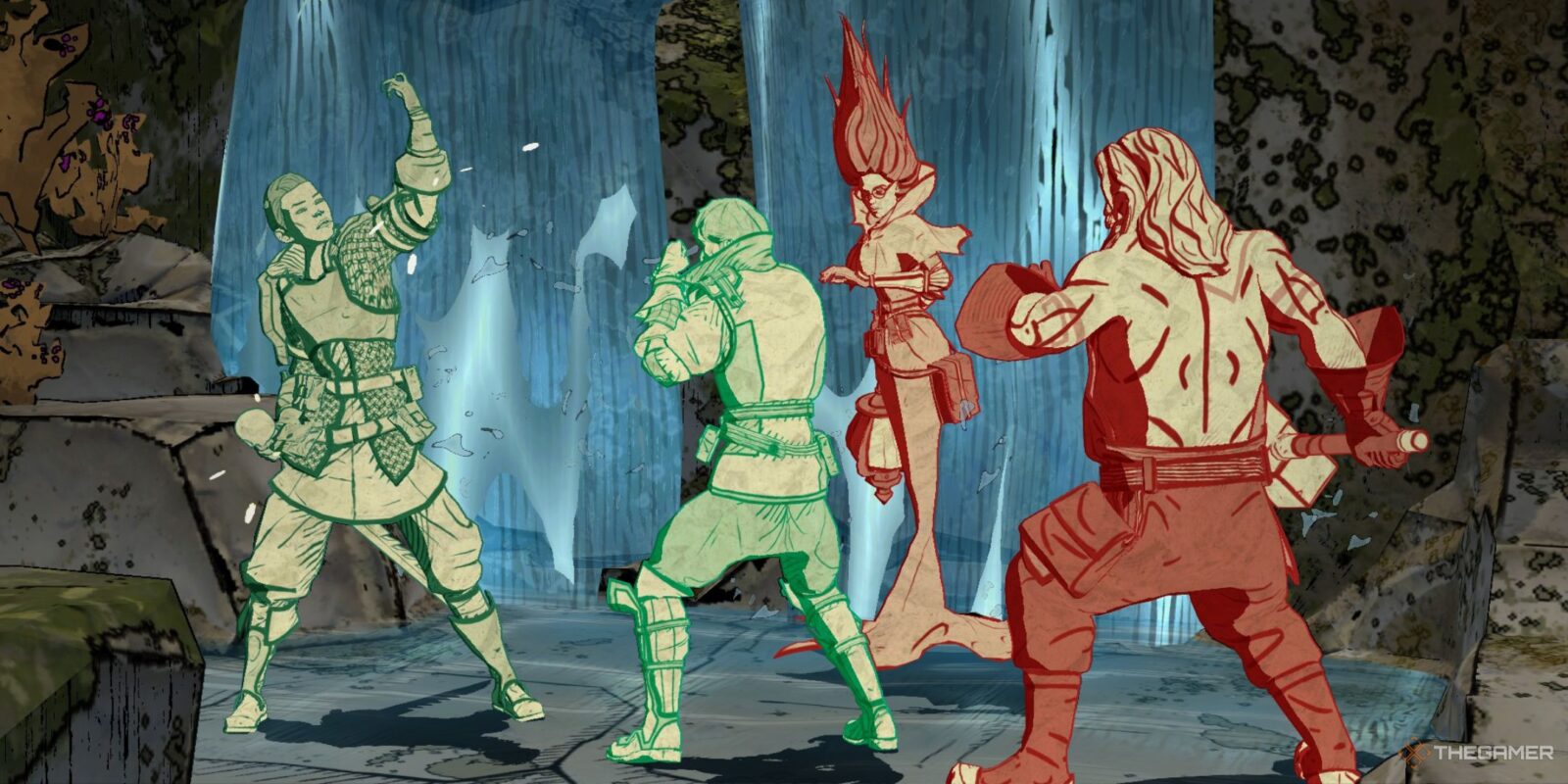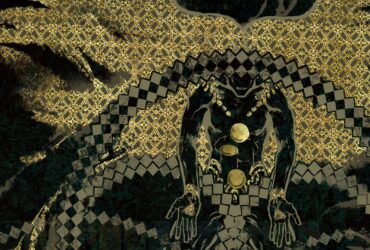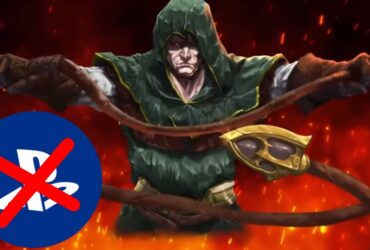The Archetypes in Knights In Tight Spaces are classic fantasy classes, adapted for the game’s turn-based brawls. Each offers unique bonuses, from the equipment that they can use to the types of cards that they favor in their deck.

Related
Knights In Tight Spaces Review: You Wish Your D&D Campaign Was This Cool
The sequel to Fight In Tight Spaces goes medieval, and it works surprisingly well.
You start with only three Archetypes available, but you’ll quickly unlock more as you gain XP. You’ll be glad for the extra options as you progress into later chapters, as enemies get more complex. Having a diverse party with a broad skill set can only help you in your quest, after all.
Melee Archetypes
These Archetypes focus solely on hand-to-hand combat, with no ranged or magical options. As a tradeoff, they usually get big damage bonuses that let them dispatch enemies quickly and efficiently.
Brawler
Brawlers are masters of unarmed combat – in fact, they can’t equip weapons or armor of any kind whatsoever. While this does lock them out of a few weapon-centric cards, it means they’re always able to use throws and grapples; knockdowns and positioning are a key part of their strategy as a result.
Brawlers also get a fifty-percent damage bonus when making unarmed attacks, so be sure that your deck includes a few high-damage cards like Heavy Strike.
Brawlers tend to rely on big Combos, so try not to move around with them too much if you don’t have to. Their focus on pushes and throws can also cause them to struggle against enemies like Ghosts and Big Knights, who can’t be knocked down. Be sure to prepare in advance for these foes, either by recruiting party members better suited to dealing with them or adding cards to your deck focused on damage rather than board control.
Fighter
The Fighter is the mirror image of the Brawler; they can equip weapons, shields, and armor, so frequent trips to the Blacksmith make them a veritable juggernaut. They don’t hit quite as hard as the Brawler, sporting only a twenty-five percent damage boost, regardless of their equipment, but you can customize their build to a much greater extent by buying and upgrading their gear.
Unless you decide to go with an unarmed Fighter build, this Archetype won’t be doing any throwing or tackling, so focus on setting up Support Attacks with your allies and doing big damage wherever you can. Use the extra Block granted by armor and shields to tank hits from enemies, which lets you maintain your Combo by staying put rather than trying to avoid attacks.
Swordsman
Unlocked at Level 15, the Swordsman focuses on one-handed weapons. Their starting Rapier ignores enemy Block, which doesn’t do much in the early game but is useful against Knights later on if you decide to keep it.
Swordsmen can equip shields, and you may as well do so since they can’t equip two-handed weapons!
Swordsmen get a fifty-percent damage bonus to melee weapon attacks but deal twenty-five percent less damage with unarmed strikes, so while it’s useful to have cards like Quick Kick for positioning purposes, they won’t do as much damage. Instead, focus on powerful attacks with your sword, sprinkling in cards like Secret Strike or Slash to avoid retaliation and inflict effects like Bleed, respectively.

Related
Dungeons And Dragons: The 17 Best Wizard Cantrips, Ranked
The low-level spells have the best effects that can be applied to all sorts of situations, from combat to… non-combat.
Ranged Archetypes
These are the only classes in the game that can equip bows. They can still fight at melee range, even with a bow equipped, so don’t count them out when the enemy closes in. The most important thing to note is that they can provide or trigger Support Attacks from across the board while equipped with a ranged weapon!
Rogue
The Rogue is the third starting Archetype, alongside the Brawler and Fighter. They’re one of the weaker classes to begin a run with, but if they survive the early chapters, they have the potential to fund an elite fighting force since they get extra Gold for each enemy they defeat.
While the Rogue can equip bows, they don’t start with one, so try to get your hands on a bow as soon as possible. Rogues also get forty percent less Block from cards that they use, so focus on Dodge and Stun to avoid attacks… or just move out of the way altogether.
Hunter
If you want a character truly focused on bow attacks, pick the Hunter once they unlock at Level 12. Not only do they start with a bow, but they deal twenty-five percent more damage when using one.
Hunters deal less damage when using a melee weapon, but there’s really no reason to equip them with one in the first place.
Like Rogues, Hunters do well when they have allies to provide supporting fire to. Remember, though, that yellow cards in the deck can only be used by characters equipped with bows, so the more of those you have the fewer cards in each hand your melee characters will have access to. Find the balance that works for your build, though, and your party will tear through most encounters.
Attuned Archetypes
Attuned characters can cast spells, giving them some extremely powerful options in combat that others don’t have. It’s possible, through equipment like the Pagan Robe, for non-Attuned characters to gain spellcasting abilities, but only these classes can use magic from the start.
Sorcerer
The Sorcerer becomes available after your first encounter with Attuned enemies, at the beginning of Chapter One. They rely heavily on magic to deal damage, as their melee attacks have a damage debuff while their spells, notably the excellent Lightning Bolt, deal twenty-five percent more damage.
The Sorcerer has one of the better starting decks; it’s lean, consistent, and plays to their strengths. There’s less need to draft a fresh deck when playing this class, but you could get lucky!
Visit the Trader often to see if new spell cards are available, and if not, upgrade the ones you have. Avoid filling up your deck too much to make sure that you always have plenty of spells in each hand, and you should be able to blast your way through most fights.
Cleric
The Cleric is similar to the Fighter, but can cast spells, making them arguably the most versatile class in the game. You can kit them out with upgraded weapons, shields, and armor, load them out with powerful spells, or both!
The Cleric also gets a twenty-five percent damage bonus against Supernatural enemies like undead and demons, making them very powerful in the later chapters of Story Mode.
Best of all, since the Cleric is both an accomplished warrior and spellcaster, they work exceptionally well with most other party members. The only characters they can’t really share cards with are bow-users and Brawlers, whose weapon restrictions mean that they’ll have some cards that only they can use.
Warlock
The Warlock becomes available at Level 20, and for good reason – this advanced Archetype should only be attempted by players who have gotten the hang of the game. Warlocks have access to powerful spells like Blood Pact and Cursed Lightning, which have devastating effects on the enemy but also inflict debuffs on the party in exchange.
Warlocks’ spells are even more powerful than those of the Sorcerer, dealing an fifty percent more damage than what’s shown on the card. However, you really need to pay attention to every move that you and your opponents make; Knights In Tight Spaces is an unforgiving game under normal circumstances, and that goes double for the Warlock.
Warlocks cannot Block, at all. Build a Dodge-heavy deck, perhaps supported by a Rogue in your party, to avoid taking more damage than you have to.
Related
Baldur’s Gate 3: 15 Best Warlock Spells
Looking to cause havoc and mayhem as a Warlock in Baldur’s Gate 3? Of course you are – you’re a Warlock.











Leave a Reply